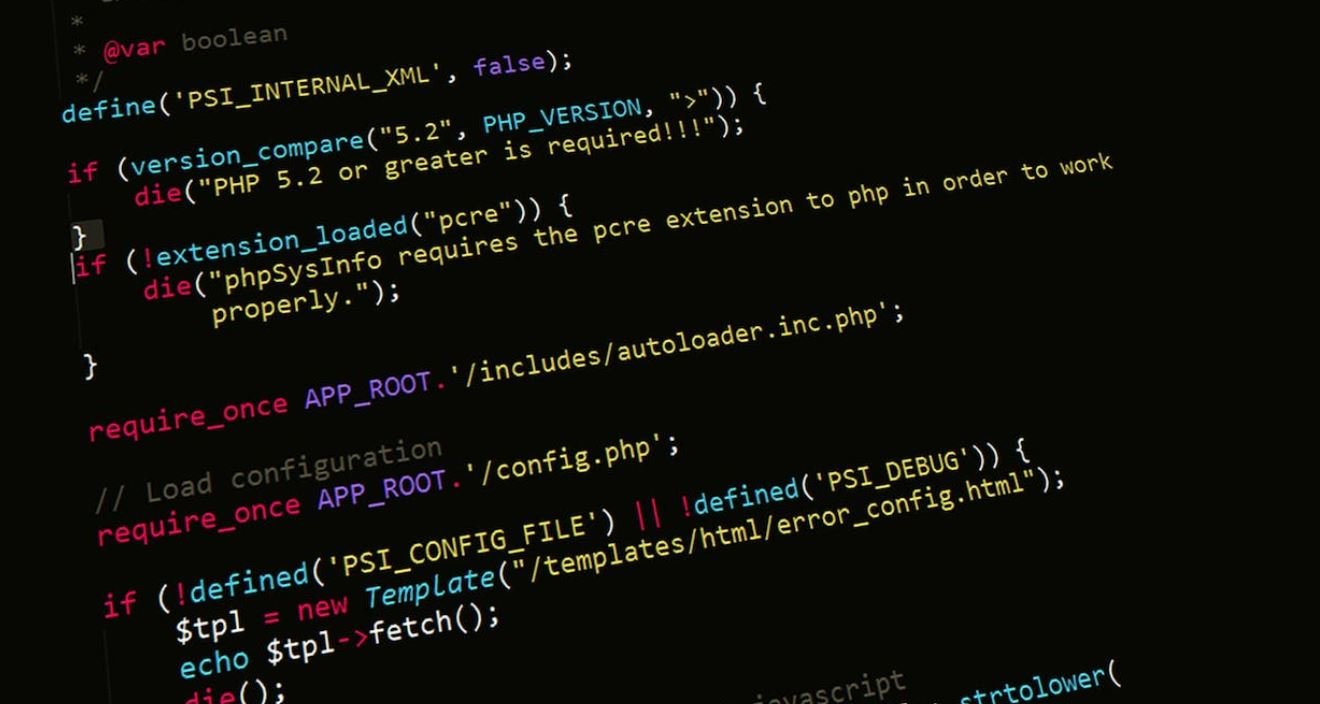Artificial Intelligence Project Life Cycle
Introduction
Artificial Intelligence (AI) project life cycle refers to the various stages involved in the development and implementation of AI projects. It encompasses planning, data collection, model building, evaluation, and deployment. Understanding the different phases of the AI project life cycle is essential for successful project management and achieving desired outcomes.
Key Takeaways
- Artificial Intelligence project life cycle involves planning, data collection, model building, evaluation, and deployment.
- Each phase of the life cycle requires careful consideration and attention to ensure project success.
- Effective project management is crucial for achieving desired outcomes in AI projects.
1. Planning
The planning phase is the foundation of any AI project. It involves defining the project goals, identifying stakeholders, allocating resources, and creating a timeline. *Careful planning sets the stage for a successful project.*
- Create a clear project scope and objectives.
- Identify the stakeholders and their roles in the project.
- Allocate necessary resources, including data and computing power.
- Develop a timeline with specific milestones and deadlines.
2. Data Collection
Gathering relevant and high-quality data is crucial for training AI models. This phase involves sourcing, cleaning, and organizing data for analysis. *The quality of the data directly impacts the accuracy of AI predictions.*
- Identify and collect relevant data sources.
- Preprocess the data by cleaning and removing outliers.
- Organize the data in a suitable format for analysis.
- Ensure data privacy and compliance with regulations.
3. Model Building
In the model building phase, algorithms and models are developed to train the AI system. This involves selecting appropriate algorithms, fine-tuning parameters, and iterative model testing. *The model building phase shapes the intelligence of the system.*
- Select suitable algorithms based on the project requirements.
- Fine-tune algorithm parameters for optimal performance.
- Train the model using the collected data.
- Iterate and test the model to improve accuracy.
| Factors | Impact |
|---|---|
| Data quality | Affects the accuracy and reliability of the model. |
| Algorithm selection | Determines the model’s performance and capabilities. |
| Parameter tuning | Optimizes the model’s behavior and predictive power. |
4. Evaluation and Validation
The evaluation phase assesses the performance and effectiveness of the AI system. This involves measuring accuracy, precision, recall, and other metrics to ensure the model meets the project goals. *Thorough evaluation is necessary to validate the system’s reliability and usefulness.*
- Use appropriate evaluation metrics to assess the model’s performance.
- Compare the model’s predictions with ground truth data.
- Iteratively refine the model based on evaluation results.
- Validate the system against real-world scenarios.
5. Deployment
The deployment phase involves integrating the AI system into the operational environment. It includes testing, troubleshooting, and monitoring the performance of the AI system in real-world conditions. *Successful deployment ensures the AI system effectively integrates into the intended use case.*
- Test the AI system under different conditions and use cases.
- Address any issues or bugs identified during testing.
- Monitor system performance and make necessary adjustments.
- Regularly update the model to maintain effectiveness.
| Benefits | Impact |
|---|---|
| Improved efficiency and productivity | Reduces manual workload and enhances overall performance. |
| Enhanced decision-making | Provides data-driven insights for better strategic decisions. |
| Personalized customer experiences | Delivers tailored services, increasing customer satisfaction. |
Wrap Up
The AI project life cycle encompasses the crucial stages of planning, data collection, model building, evaluation, and deployment. Each phase requires careful attention and management to ensure project success. By following this life cycle, organizations can harness the power of AI to drive efficiency, improve decision-making, and deliver personalized experiences to customers. Embracing AI technology is essential for staying competitive in today’s rapidly evolving business landscape.

Common Misconceptions
Misconception 1: Artificial intelligence is about creating humanoid robots
One common misconception about artificial intelligence is that it solely revolves around creating humanoid robots that can think and act like humans. However, this is just one application of AI, and it does not represent the entire scope of AI projects. AI encompasses a broad range of technologies and techniques that enable machines to perform tasks that require human-like intelligence, such as pattern recognition, decision-making, and natural language processing.
- AI can be used in various fields, including healthcare, finance, and customer service.
- AI-powered systems primarily focus on problem-solving rather than imitating humans.
- AI algorithms and models are often implemented in software rather than physical robots.
Misconception 2: AI projects will replace human jobs
Another misconception is that AI projects are meant to replace human workers and render them unemployed. While AI undoubtedly has the potential to automate certain tasks, the goal of AI projects is typically to augment human capabilities rather than replace human workers entirely. AI is designed to assist humans in performing tasks more efficiently, enabling them to focus on higher-level activities that require creativity and critical thinking.
- AI projects often aim to improve productivity and efficiency by automating repetitive or mundane tasks.
- AI can help humans make better decisions by analyzing and presenting vast amounts of data.
- The deployment of AI in the workforce can lead to new job opportunities and skill requirements.
Misconception 3: An AI project can be implemented quickly and easily
There is a misconception that AI projects can be implemented quickly and with minimal effort. In reality, AI projects typically require significant time, effort, and expertise due to their complexity. Developing and deploying AI models involves data collection, preprocessing, algorithm selection, training, evaluation, and ongoing maintenance.
- Data collection and preprocessing can be time-consuming and may require specialized skills.
- Choosing the right algorithms and model architectures is crucial for the success of an AI project.
- AI models often require regular updates and fine-tuning to maintain their accuracy and reliability.
Misconception 4: AI projects always deliver accurate and reliable results
While AI has shown remarkable capabilities in various domains, it is not infallible. One misconception is that AI projects always deliver accurate and reliable results. However, the performance of AI models heavily depends on the quality and diversity of the data used for training, as well as the algorithms and parameters chosen. In some cases, AI models can produce biased or incorrect outputs.
- AI models trained on biased or incomplete data can produce biased or unfair results.
- The interpretability and transparency of AI models can be limited, making it challenging to understand and validate their decisions.
- AI models may require continuous monitoring and evaluation to identify and mitigate potential risks or biases.
Misconception 5: AI projects will inevitably lead to superintelligent machines
There is a misconception that AI projects will inevitably lead to the creation of superintelligent machines that surpass human intelligence. While AI has made significant advancements, achieving human-level intelligence or creating sentient machines is currently far from reality. The field of AI research focuses on developing narrow or specialized AI rather than general intelligence.
- Creating general AI that can match or exceed human intelligence is an immensely complex challenge.
- AI projects typically focus on solving specific problems and improving task-specific capabilities.
- Ethical considerations and regulations play a crucial role in controlling the development and deployment of AI technologies.

The Importance of Artificial Intelligence in Business
Artificial Intelligence (AI) has become a game-changer in various industries, revolutionizing the way businesses operate and making processes more efficient. From customer service chatbots to predictive analytics, AI has found its way into every aspect of business operations. Understanding the project life cycle of AI is crucial for successful implementation and reaping the benefits it offers. The following tables provide key insights into different stages of an AI project.
Table: AI Project Life Cycle
This table demonstrates the different stages involved in an AI project life cycle, outlining the main activities undertaken during each phase.
| Stage | Description |
|————————|—————————————————————————————|
| Problem Identification | Identifying business challenges and areas where AI can provide valuable solutions. |
| Data Collection | Gathering and organizing relevant data for analysis and model training. |
| Model Development | Building AI models using machine learning algorithms and techniques. |
| Model Testing | Evaluating the performance and accuracy of the developed AI models. |
| Model Deployment | Integrating the AI models into existing systems and ensuring their smooth operation. |
| Model Monitoring | Continuously monitoring the performance and making adjustments to improve accuracy. |
| Feedback Analysis | Analyzing user feedback to identify areas of improvement for the AI models. |
| Model Enhancement | Iteratively improving the AI models based on feedback analysis and user requirements. |
| Maintenance | Maintaining and updating the AI models to ensure optimal performance and relevancy. |
| Project Evaluation | Assessing the overall effectiveness and outcomes of the AI project. |
Table: Key Factors Influencing AI Project Success
This table highlights the critical factors that significantly impact the success of an AI project. Understanding and addressing these factors are essential for achieving desired outcomes.
| Factors | Description |
|—————————–|————————————————————————————————-|
| Clear Project Objectives | Clearly defining the goals and expected outcomes of the AI project. |
| Sufficient Data Availability | Ensuring the availability of relevant and high-quality data for model training. |
| Expertise and Resources | Having a skilled AI team and adequate resources to develop, deploy, and maintain the models. |
| Ethical Considerations | Addressing ethical issues related to data privacy, bias, and potential societal impact. |
| Alignment with Business | Aligning AI projects with the overall business strategy and goals for maximum impact. |
| User Involvement | Involving users throughout the project to gather feedback and improve model effectiveness. |
| Scalability and Flexibility | Designing AI models that can scale and adapt to changing business needs and requirements. |
| Robust Infrastructure | Ensuring a reliable IT infrastructure capable of handling the AI project’s demands. |
| Continuous Improvement | Implementing processes for continuous improvement and iteration of the AI models. |
| Risk Management | Identifying and mitigating potential risks and challenges associated with the AI project. |
Table: Common Challenges in AI Project Implementation
This table outlines the common challenges organizations face when implementing AI projects. Identifying and addressing these challenges is crucial to ensure successful and smooth project execution.
| Challenges | Description |
|————————————-|———————————————————————————-|
| Lack of Data Availability | Insufficient or poor-quality data can hinder AI model development and accuracy. |
| Limited AI Expertise | A shortage of skilled professionals with expertise in AI can impede project progress. |
| Ethical and Regulatory Concerns | Addressing concerns related to data privacy, biases, and adherence to regulations. |
| Integration with Existing Systems | Compatibility issues and integration complexities when deploying AI models. |
| Scalability and Technical Constraints | Scaling AI models to handle increased data volumes and technical limitations. |
| Change Management | Overcoming resistance and ensuring effective change management within the organization. |
| Cost and ROI | Balancing the costs associated with AI implementation against expected returns. |
| Uncertainty and Risk | Addressing potential risks and uncertainties throughout the project life cycle. |
| Lack of Management Support | Lack of support and buy-in from top management and stakeholders can hinder progress.|
| User Acceptance | Overcoming user resistance and ensuring user acceptance and trust in AI systems. |
Table: AI Project Risks and Mitigation Strategies
This table highlights the potential risks that organizations may face during an AI project and suggests strategies for mitigating these risks.
| Risks | Mitigation Strategies |
|—————————————–|————————————————————————————–|
| Data Breaches and Security Concerns | Implement robust security measures, encryption protocols, and regular vulnerability assessments. |
| Bias and Discrimination | Conduct thorough testing to identify and eliminate bias in AI models. |
| Inadequate Performance | Continuously monitor and analyze model performance, make tweaks, and retrain models if necessary. |
| Regulatory and Compliance Issues | Stay updated with legal and regulatory requirements, adhere to privacy and data protection laws. |
| Lack of Transparency | Enhance the interpretability of AI models through explainable AI techniques and clear documentation. |
| Technological Limitations | Regularly assess the evolving technology landscape and adopt new advancements to improve AI model capabilities. |
| Data Quality and Accuracy Issues | Implement data cleaning and preprocessing techniques to ensure high-quality, accurate data for model training. |
| Overreliance on AI | Balance the role of AI with human expertise to avoid an excessive reliance solely on AI-generated insights. |
| Implementation Delays and Budget Overruns | Thoroughly plan and allocate sufficient resources, set realistic timelines, and conduct regular project risk evaluations. |
| Lack of User Adoption and Training | Involve users from the early stages, provide comprehensive training, and address user concerns to ensure adoption. |
Table: AI Project Examples in Different Industries
This table showcases examples of successful AI projects in various industries, illustrating the significant impact and versatility of AI.
| Industry | AI Project Examples |
|———————|——————————————————————————————————————————————————–|
| Healthcare | AI-powered diagnosis systems, predictive analytics for patient treatment, and medical image analysis for more accurate diagnoses. |
| Finance | AI-driven fraud detection, algorithmic trading systems, and personalized financial recommendations based on user behavior analysis. |
| Retail | Chatbots for customer support, AI-based personalized product recommendations, and demand forecasting for optimized inventory management. |
| Manufacturing | AI-driven predictive maintenance, quality control systems, and autonomous robotic production lines for improved efficiency and productivity. |
| Transportation | Autonomous vehicles, AI-based route optimization for logistics, and predictive maintenance for enhanced fleet management. |
| Marketing and Sales | AI-powered customer segmentation and targeting, sentiment analysis for social media monitoring, and personalized marketing campaigns. |
| Energy | Predictive maintenance for power plants, AI optimization for energy distribution, and smart grid management for efficient energy usage. |
| Education | Intelligent tutoring systems, personalized learning platforms, and AI-driven automated grading and feedback systems. |
| Agriculture | AI-powered crop monitoring and precision farming, disease detection in plants, and autonomous farm machinery for optimized cultivation techniques. |
| Entertainment and Media | AI-based content recommendation systems, sentiment analysis for audience feedback, and AI-generated personalized content creation. |
Table: AI Project Benefits and Return on Investment
This table highlights the benefits organizations can expect to achieve through successful AI projects and the potential return on investment.
| Benefits | Return on Investment (ROI) |
|—————————|———————————————————————————-|
| Increased Efficiency | Optimized processes, reduced human errors, and faster decision-making. |
| Enhanced Customer Experience | Personalized recommendations, improved customer service, and reduced response times. |
| Cost Savings and Resource Optimization | Automation of repetitive tasks, improved resource allocation, and minimized operational costs. |
| Data-Driven Insights | Extracting valuable insights from large datasets for strategic decision-making. |
| Improved Product Quality | Enhanced product design, reduced defects, and better quality control. |
| Competitive Advantage | Stay ahead of competitors by leveraging AI technologies and unique use cases. |
| Innovation and New Opportunities | Identify new business opportunities and disruptive ways of operating. |
| Better Risk Management | Accurately predict and mitigate potential risks and threats. |
| Scalability and Growth | Scalable AI models to handle increased data volumes and business expansion. |
| Smarter Decision-Making | Data-driven insights for strategic decision-making and improved outcomes. |
Table: Key AI Technologies and Techniques
This table lists some of the key AI technologies and techniques commonly used in AI projects, showcasing the diverse range of tools available for organizations.
| AI Technologies/Techniques | Description |
|————————————-|———————————————————————————————-|
| Machine Learning | Algorithms that allow systems to learn and improve from experience without being explicitly programmed. |
| Natural Language Processing | Enables computers to understand, interpret, and generate human language, facilitating communication between humans and machines. |
| Deep Learning | A subset of machine learning that uses artificial neural networks to analyze and process complex patterns and data. |
| Computer Vision | Empowers systems to process, analyze, and extract meaningful information from digital images or videos. |
| Natural Language Generation | AI models that create human-like text based on underlying data, generating coherent and contextually relevant content. |
| Robotics and Autonomous Systems | Integrating AI into physical systems to perform tasks autonomously, enhancing productivity and efficiency. |
| Expert Systems | AI systems designed to replicate and emulate human expertise and decision-making in specific domains. |
| Reinforcement Learning | Learning through interactions with an environment, where systems receive rewards or penalties based on their actions. |
| Prediction and Optimization | Utilizing AI models to predict future outcomes and optimize processes by identifying the best possible solutions. |
| Speech Recognition | AI systems capable of converting spoken language into written text, enabling voice-based command and control. |
Conclusion
The use of Artificial Intelligence (AI) in business is transforming the way companies operate, offering tremendous benefits across various industries. Understanding the project life cycle, key success factors, challenges, and risks associated with AI projects is vital for organizations to harness this technology effectively. By leveraging the diverse range of AI technologies and techniques, organizations can enhance efficiency, improve decision-making, and gain a competitive edge. However, it is crucial to navigate ethical considerations and address potential pitfalls to ensure responsible and successful AI implementation. As the AI landscape continues to evolve, organizations must stay agile, continuously evaluate their AI projects, and adapt to emerging technologies to remain at the forefront of innovation.
Frequently Asked Questions
Artificial Intelligence Project Life Cycle
What is the artificial intelligence project life cycle?
Why is it important to follow a structured project life cycle for AI projects?
What are the key stages of the artificial intelligence project life cycle?
How important is data collection and cleaning in the AI project life cycle?
What challenges are commonly faced during the model development stage of an AI project?
Why is rigorous testing and validation essential in the AI project life cycle?
What factors should be considered during the deployment stage of an AI project?
Is the AI project life cycle a linear process?
What are the key considerations for ongoing monitoring and maintenance of AI projects?
How can AI project life cycle be integrated into an organization’s overall project management framework?




